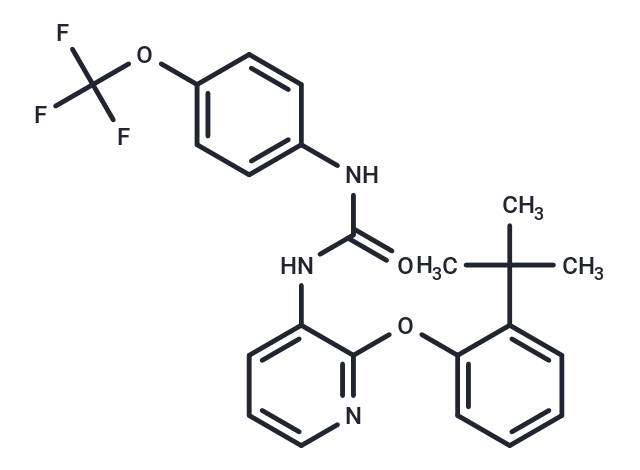Shopping Cart
- Remove All
 Your shopping cart is currently empty
Your shopping cart is currently empty

BPTU (BMS-646786) is an allosteric antagonist of P2Y1 (EC50 = 0.06-0.3 μM). Non-nucleotide ligand. Binds receptor outside of the helical bundle. Blocks inhibition of spontaneous contraction of rat and mouse colon induced by electrical field stimulation, nicotine and P2Y agonists. Antithrombotic; reduces platelet aggregation.

| Pack Size | Price | Availability | Quantity |
|---|---|---|---|
| 1 mg | $32 | In Stock | |
| 2 mg | $45 | In Stock | |
| 5 mg | $66 | In Stock | |
| 10 mg | $118 | In Stock | |
| 25 mg | $251 | In Stock | |
| 50 mg | $433 | In Stock | |
| 100 mg | $642 | In Stock | |
| 1 mL x 10 mM (in DMSO) | $66 | In Stock |
| Description | BPTU (BMS-646786) is an allosteric antagonist of P2Y1 (EC50 = 0.06-0.3 μM). Non-nucleotide ligand. Binds receptor outside of the helical bundle. Blocks inhibition of spontaneous contraction of rat and mouse colon induced by electrical field stimulation, nicotine and P2Y agonists. Antithrombotic; reduces platelet aggregation. |
| Targets&IC50 | P2Y1:0.06-0.3 μM(EC50) |
| In vivo | Octreotide-treated groups show a significant reduction in the tumor volume when compared with saline group. Octreotide-PPSG (1.4 mg/kg, i.p.) shows greater antitumor effect than Octreotide-soln (100 μg/kg, i.p.). Octreotide-treatments results in significant inhibitory effect on the expression levels of SSTR2 and SSTR5 in primary HCC-bearing rats compared with the saline group. Octreotide-PPSG appears to inhibit the expression of SSTR2 and SSTR5 to a greater extent than that of Octreotide-soln treated group. A test dose of octreotide acetate significantly decreases the serum gastrin level to approximately one third of the baseline in 2 hr and the effect lasted approximately for 6 hr. On day 21, treatment with sustained-release formulation of octreotide acetatea (5 mg intramuscular, q 4 wk) is initiated. |
| Alias | BMS-646786 |
| Molecular Weight | 445.43 |
| Formula | C23H22F3N3O3 |
| Cas No. | 870544-59-5 |
| Smiles | CC(C)(C)c1ccccc1Oc1ncccc1NC(=O)Nc1ccc(OC(F)(F)F)cc1 |
| Relative Density. | 1.307 g/cm3 (Predicted) |
| Storage | Powder: -20°C for 3 years | In solvent: -80°C for 1 year | Shipping with blue ice. | |||||||||||||||||||||||||
| Solubility Information | DMSO: 20 mg/mL (44.9 mM), Sonication is recommended. | |||||||||||||||||||||||||
Solution Preparation Table | ||||||||||||||||||||||||||
DMSO
| ||||||||||||||||||||||||||

Copyright © 2015-2024 TargetMol Chemicals Inc. All Rights Reserved.